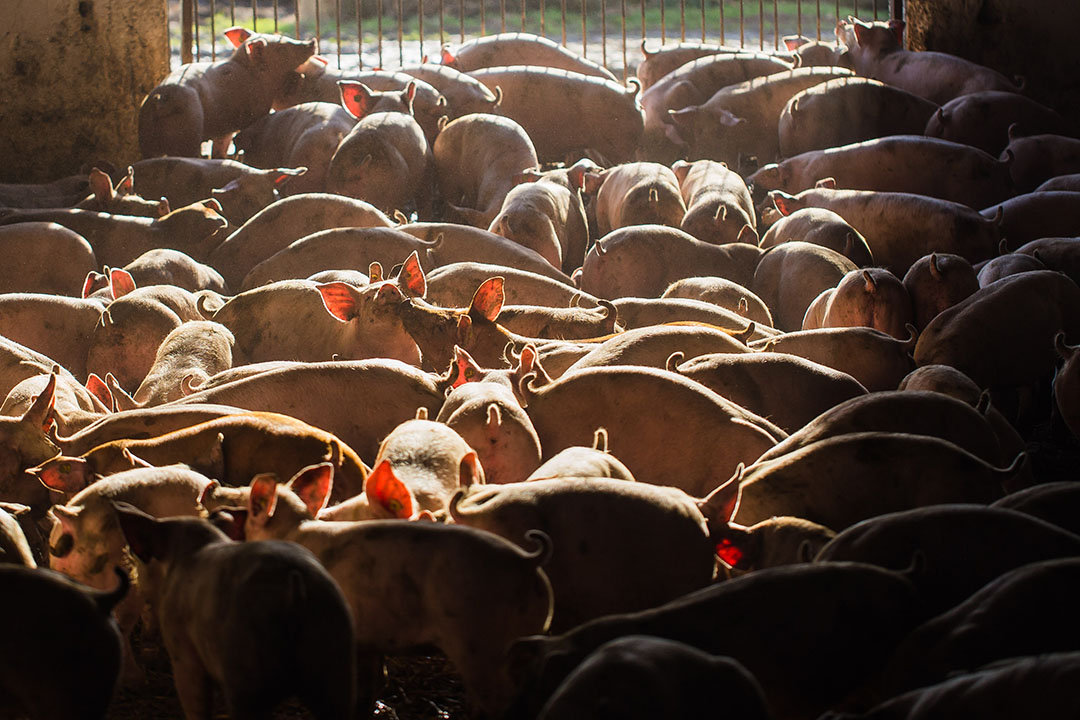A next generation antibiotic alternative

Newly discovered polymeric derivatives of ß-carotene (OxBC) have immune supporting activities that are independent of vitamin A or antioxidant effects. This new ingredient helps to maintain the health and performance of multiple livestock species.
The application of traditional antibiotic alternative products, such as probiotics, prebiotics, essential oils and organic acids, has led to the successful reduction in the prophylactic and growth promoting applications of antibiotics in feed. However, the goal to further reduce antibiotic use requires innovative new products offering better consistency and a defined mode of action, while being both effective and easy to use. A group of newly discovered immunologically active polymeric compounds derived from the spontaneous oxidation of ß-carotene offers one such solution. In field tests and from commercial usage (with the product OxC-beta Livestock, developed by Avivagen in Canada), these polymeric compounds have been shown to be a very effective alternative to antibiotics for maintaining health and productivity in swine and poultry.
Modulating the innate immune system
These polymeric compounds, discovered through research into the vitamin A-independent effects of ß-carotene, were found to be capable of beneficially modulating innate immune function. Modulation of innate immune function is a compelling and natural strategy for replacing the prophylactic application of antibiotics, since the innate immune system is capable of providing broad protection against multiple pathogens.
The immunomodulatory effects of the ß-carotene-derived polymers involve 2 main actions:
- priming innate immune function and,
- reducing prolonged and overzealous inflammatory responses.
The priming actions centre upon an ability to increase the level of pathogen sensing immune receptors (CD14, TLR-2, TLR-4) which are central to the host’s capacity to detect invading bacterial pathogens and mount an effective immune response. Furthermore, the activity of innate immune effector mechanisms, including macrophage phagocytic activity and cytokine production, is optimised. Importantly, heightened innate immune activity only occurs if receptors are activated by the presence of an actual pathogen. In this respect, the activity of the polymers is distinct from many of the other, more traditional, immunomodulating agents. While innate immune modulators, such as ß-glucans, directly stimulate a potentially energy-consuming immune response, the priming action of the polymers leads to a response only in the event that receptors are activated by an actual pathogen.

The second immune-based action of the polymers relates to a reduction in background or excess immune activity, as suggested by in vitro results that indicate that treatment is associated with a reduction in certain cytokines/chemokines that are centrally involved in perpetuating an overzealous and prolonged inflammatory response. This activity has been confirmed in an in vivo model of bovine respiratory disease.
These polymers, found naturally in β-carotene-rich forages such as alfalfa, have been thoroughly evaluated for their utility in maintaining animal health and productivity in broiler chickens and swine. Furthermore, proof of concept studies in dairy cattle and fish indicate that they also help to support optimal innate immune function in these species, suggesting that further application is likely.
Positive initial trial results
A 28-day proof-of-concept study with piglets afforded the first demonstration of activity in livestock. At day 0, half of the animals were vaccinated with a commercial live-modified vaccine against the porcine reproductive and respiratory syndrome (PRRS) virus, while the other half were injected with a saline placebo. In vaccinated pigs, inclusion of the ß-carotene-derived polymers, at a level of 10 mg/kg in the diet, significantly improved average daily gain (ADG) and the feed conversion ratio (FCR) by 12.2% and 7.9%, respectively, compared to vaccinated, non-supplemented controls. In non-vaccinated animals, polymer-supplementation at 10 mg/kg improved ADG by 4.3% and significantly improved FCR by 9.2% relative to the controls.
In 2 separate subclinical Clostridium perfringens challenge trials conducted in Canada and South Korea, supplementation with the ß-carotene-derived polymers resulted in significant improvements in broiler performance. In the Canadian trial, supplementation increased final body weight (FBW) by 7.8% and improved the FCR by 4.7% relative to the challenged controls. In the South Korean trial, supplemented birds were approximately 11% heavier and grew 12% faster than the non-supplemented, challenged control birds. Furthermore, in reducing severity of intestinal lesions, the polymers (2, 4 and 6 mg/kg) performed as well as or better than the positive control birds that received standard antibiotic growth promoters (Virginiamycin, Bacitracin). Supplementation also reduced C. perfringens colony counts by 2 to 3 log units, i.e. over 99%, in challenged birds. Specifically, the lesion scores and colony counts of supplemented birds were reduced to the levels seen in non-challenged birds.
Allowing the good, removing the bad
The South Korean broiler trial results are noteworthy, as they highlight a further benefit of targeting the immune system as a strategy for fending off low-level bacterial challenges, as opposed to directly targeting the bacteria themselves. Use of Virginiamycin or Bacitracin led to the complete elimination of C. perfringens. However, it is highly likely that the antibiotics also eliminated other bacteria that were beneficial members of the bird’s gut microbiome. In comparison, the immune support provided by polymers led to a reduction in C. perfringens to the levels seen in the healthy non-challenged birds. The immune system in the gut has evolved to allow the presence of ‘good’ bacteria while recognising and eliminating pathogenic species. By supporting the immune system, immunomodulating agents take advantage of natural host defence mechanisms, which are unlikely to lead to disruption of the microbiome. In contrast, agents that directly and non-specifically target bacteria, such as antibiotics and zinc oxide, can cause unintended and deleterious disruptions to the microbiome.
The results of these early proof of concept studies have been confirmed in numerous trials carried out with swine and broilers under commercial production environments in a variety of geographic locations and production systems, in Canada, the US, China, Vietnam, the Philippines and Thailand. In each case, the use of a commercial product based on the immunomodulatory actions of ß-carotene-derived polymers led to meaningful improvements in growth performance and/or clinical health.
Author: William W. Riley, International School, Jinan University, Guangzhou, China







